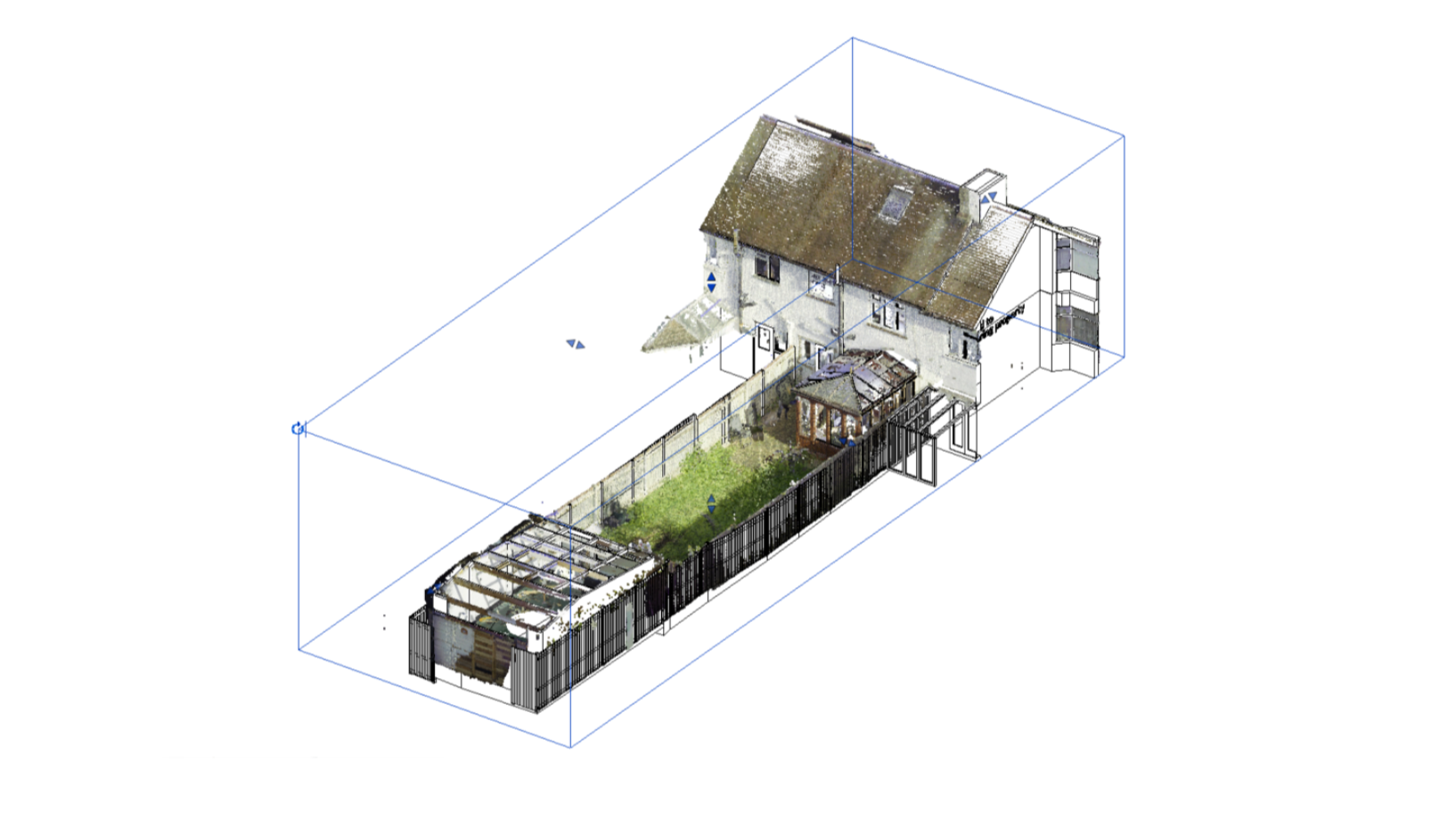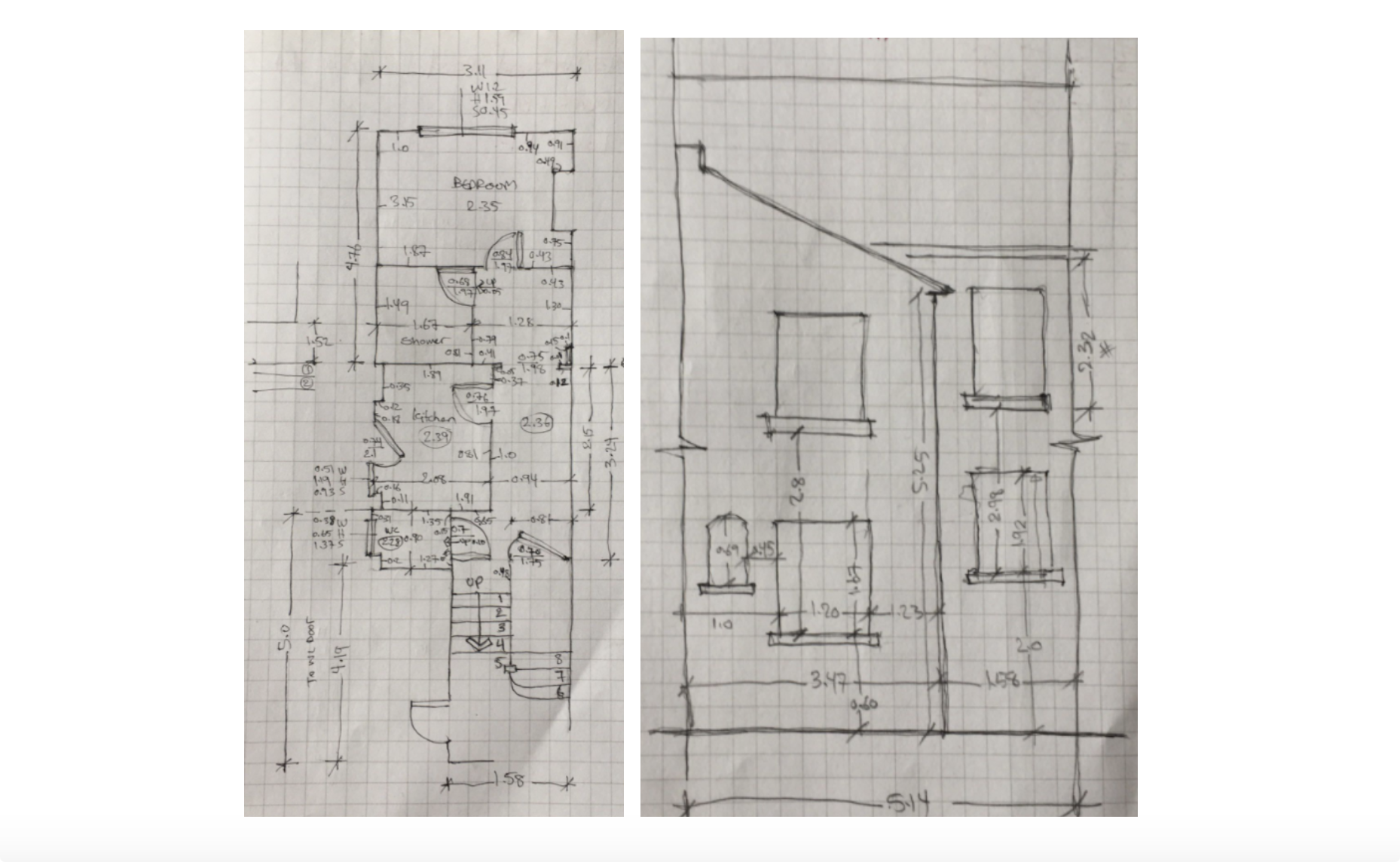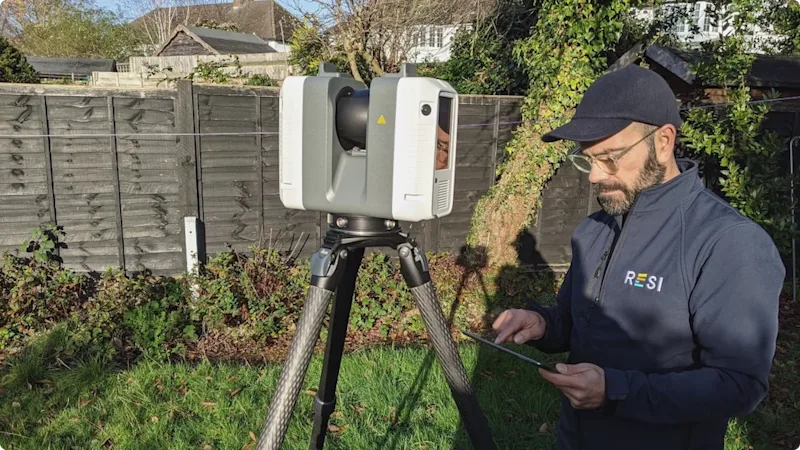Surveys don’t get talked about nearly enough. As one of the first steps on your renovation journey, they provide the foundation for all the work that follows. Yet, when it comes to surveying a property, many homeowners can feel left in the dark. What kind of survey do you need? Is a topographic survey necessary? And what’s all this talk of lasers?
To help illuminate your options, here’s a handy guide to surveys and what’s going to be the best option for your project…
Why a measured survey is important
A measured survey is essentially the foundation for your whole project, providing all the key details you’ll need during the design process and beyond.
Through the course of the process, your surveyor will map out the layout of your property and calculate the dimensions, this information can then be turned into your existing drawings.
What are existing drawings?
These are architectural drawings of your home as it stands today. They form the basis of pretty much every stage a project takes leading up to construction, including design, planning, building regulations, and party wall matters.
This is why a measured survey is so important. If you get a bad one and the results aren’t accurate, it can have major consequences for the rest of your project. If caught out during the planning stage, it could mean starting your application from scratch. Likewise, a structural engineer might spot mistakes that mean the design you’ve had approved is no longer possible.
Put simply…
A bad survey = lost time and budget.
Traditional vs modern techniques
Surveying has come a long way in recent years and there’s now some pretty exciting technology on the market to make getting a great survey even easier. And we would know, we use it!
3D laser scanners
Some surveyors, such as Resi, use commercial-grade scanners which capture all there is to know about your property and the surrounding land. These scanners use lasers (eat your heart out, sci-fi) to convert the dimensions of your property into millions of data points, which can then can be assembled into a 3D digital model using software known as PointCloud. Your team will then convert this model into your existing drawings, with the added benefit that your designer can check the measurements throughout your project without the need for another visit.
Why a laser survey is better than the rest…
- The scanners reduce the chances of human error and costly delays.
- It’s fast! Laser surveys do in 90 minutes what it takes a manual survey 4-5 hours.
- The level of detail it captures helps increase your chances of planning success.
- The digital models allow your designer to take a tour of your home whenever they need, allowing them to provide outstanding designs easily.
- Plus, when you map out a home in 3D, this makes it much easier for your architect to design in 3D. Plenty of architects offer 3D visualizations, but these can be less accurate if they’re working off a 2D survey.

However, there are some downsides to laser surveys. At the moment, they’re typically reserved for commercial projects, with only a few residential practices offering this product to homeowners. They can also be expensive, usually in the region of £2000.
At Resi, we believe the pros of a laser survey are so beneficial for the rest of the process, we include these surveys as part of our design service - meaning you avoid the eye-watering prices.
Learn more about Resi surveys.
Manual / Hand surveys
A hand or manual survey refers to the traditional method of conducting surveys and is still largely practised today for residential projects. They’ll walk around your property and collect measurements from each room, typically using something known as a ‘Disto’. This is a measuring tool that again, uses a laser, but only to quickly calculate the height and width of your rooms. Some really old school surveyors might even use manual instruments, such as tape measure.
While a laser survey collects data points to convert into 3D models, a hand survey will only be jotting down numbers and measurements. The surveyor will supplement this by also photographing your home, so your architect can visualise the building.
On the whole, the entire survey can take around 4 hours to complete.

Topographic surveys
Another type of survey you might encounter is the topographic variety. These take measured surveys one step further and not only map out the details of your home, but they’ll also include a detailed breakdown of the terrain’s surface features, marking the contours of the land - which is not possible to collect by hand!
One of the most common reasons to complete a topographical survey is when a piece of land is being assessed for construction or building new structures. Therefore, unless you’re building a home from scratch or erecting a substantial annexe, it’s unlikely this kind of survey will be required for your extension or renovation project.
Discover what kind of survey you need
If you’re new to home renovation or working on a quirky property, the best way to know what kind of survey you need is to talk to an expert.
At Resi, we provide free consultations, whereby you can chat to an expert and have them assess your project ideas. We’re able to offer both laser and topographic surveys, which can be included as part of a larger service package or undertaken as a standalone service. All our prices are customised to your home and can be paid in instalments.
Book a FREE consultation here to get started.



























